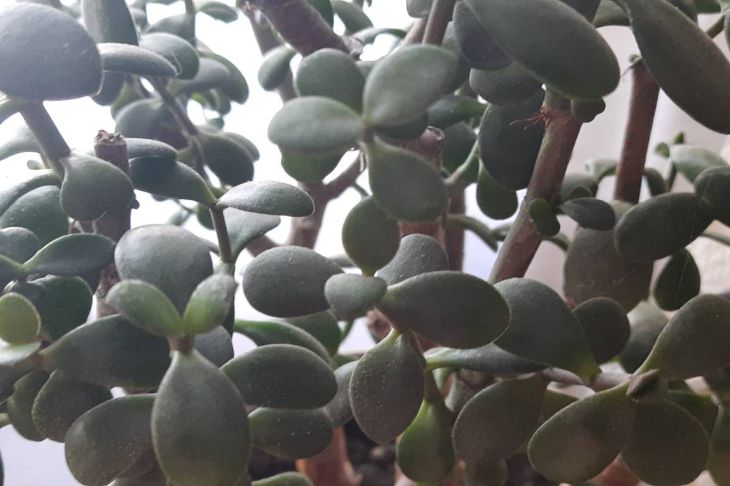Crassula is one of the most unpretentious plants, which forgives the gardener a lot and pleases him with its beauty. But still, the leaves of the crassula often become soft and wrinkled.
Sometimes this is a harmless phenomenon, and sometimes it is the first sign that the flower is on the verge of death. To save it, you need to take action in time.
What is the reason for soft and wrinkled leaves?
There is one reason for the softness and wrinkles of the leaves – lack of moisture. This is a common sign of wilting for succulents.
But we need to understand the reason for the moisture deficit. After all, insufficient water supply to the leaf apparatus can be caused by various factors.
Insufficient watering
The most harmless reason is insufficient watering. In various sources you can find information about how often and in what quantity you need to water the fat woman.

Some people recommend a little bit every three days, some recommend a lot once a month, and sometimes even once every two months. But the problem is that there is no universal recommendation.
Each owner must determine the watering scheme for themselves, based on the size of the pot, the size of the plant, the time of year, and growing conditions.
- A small pot needs to be watered less often than a large one.
- A plant in a dormant state (winter) needs less water than during the period of active growth (spring-summer).
- In a dry room, watering is needed more often, since the soil dries out faster.
- On a sunny windowsill the soil dries out faster than on a northern one.
Remember that Crassula will easily survive drought. Shriveled leaves will quickly straighten out and become elastic as soon as the plant receives enough water.
Overwatering
Excessive watering can not only reduce the decorativeness of the plant, but also destroy it. Like all succulents, the fat woman does not tolerate over-watering. Ideally, the soil lump should dry out halfway between waterings.
You can check this by sticking a wooden skewer into the pot. If it is half wet, the plant can be watered.
With constant over-watering, the root system rots and therefore cannot absorb water. As a result, the leaves begin to wilt.
In this case, you need to take the plant out of the pot, dry it out, or partially replace the soil lump. Otherwise, the plant will die.
The wrong pot
You can't plant a small plant in a pot that's too big. The root system won't be able to braid the soil ball and take all the water. The water in the soil will accumulate and "sour", which will lead to root rot.
If this is the problem, the crassula can be taken out of the large pot and transplanted into a smaller one. This will reduce the risk of rotting processes developing.
Cardinal pruning
After radical pruning, the plant experiences stress, so it slows down all processes, including the “supply” of water to the leaves.
Additionally, moisture actively evaporates from the wounds. In this case, you need to give the crassula time to recover. You cannot overwater it or feed it until new shoots begin to actively grow.
Also, softness and wrinkling of leaves can be a symptom of the presence of pests.
Carefully examine the leaves. If you find aphids, spider mites or mealybugs on them, treat the plant with any insecticide.








